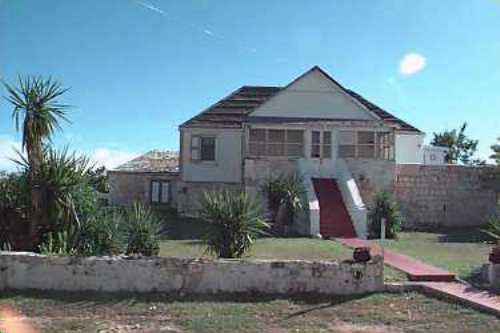|
|
|---|
Hidden Delights: Archaeology and History Book |
| From the Anguilla Local News - Site Map. |
|
|
|---|
Hidden Delights: Archaeology and History Book |
| From the Anguilla Local News - Site Map. |
![[Click for larger view of book]](images/archbook-sm.gif) There are many enjoyable experiences in
Anguilla that the tourist would not normally hear about.
For
example, there is this book,
"The 1981-1985 Review of the Anguilla Archaeological
and Historical Society, which is still in print and for sale on
Anguilla.
This fascinating 120-page
book has scholary studies of The Fountain and other
Amerindian sites,
news clippings on the Revolution, and articles on
historical sites such as Wallblake House.
$15 US, copies available at
various places, such as the Arts and Craft Center next to
the library in The Valley.
There are many enjoyable experiences in
Anguilla that the tourist would not normally hear about.
For
example, there is this book,
"The 1981-1985 Review of the Anguilla Archaeological
and Historical Society, which is still in print and for sale on
Anguilla.
This fascinating 120-page
book has scholary studies of The Fountain and other
Amerindian sites,
news clippings on the Revolution, and articles on
historical sites such as Wallblake House.
$15 US, copies available at
various places, such as the Arts and Craft Center next to
the library in The Valley.
Here is an excerpt about the Fountain (now an undeveloped National Park, not open to the public):
The Fountain is a large dome-shaped limestone cavern or 'sink-hole' located on a ridge about 70 feet above sea level, overlooking the Western end of Shoal Bay North [East]. Generations of Anguillans have known or heard of the Fountain as a reliable source of fresh water and many older people remember climbing down the roots of the 'signature' tree which marks the entrance into the cave, to reach the pools below. In 1953 a steel ladder was erected to facilitate access. It is only in recent years that Anguilla's Fountain Cavern has been recognized as an archaeological site.[David Watters, Anthropologist, reported in February 1986:] Fountain Cavern has the potential to become an extremely important facility for interpreting the culture of the Amerindian peoples of the Caribbean. The major focus within the cavern should become the petroglyphs themselves. A locale with so many well preserved cave petroglyphs is unknown elsewhere in the Lesser Antilles... Fountain Cavern appears to have been a ceremonial site for the Amerindian population of Anguilla (and possibly nearly islands). The ceramic materials recovered from the cavern indicate the cultural occupation probably occurred in the late first and early second millenium A.D.

Here is another excerpt from the history book, regarding the naming of Wallblake House:
...we know that the old house was built in 1787 because of a brick placed in the northern side of the old kitchen and bakery on which that date was carved and is still faintly visible...Who built Wallblake House? Here again we do not know for sure but the name does suggest clues...William Blake, commonly known as Will or Bill Blake, was a sugar planter at the turn of the 18th century, when sugar was still supreme in Anguilla. It is significant to note that he was sometimes referred to as 'Will' and it is more than likely that it was this planter who built the old mansion in question and from whom the 'Wallblake' is derived. In an oral society such as Anguilla, names usually undergo an idiomatic change which after many years becomes the universally accepted pronunciation and which in turn is consequently transmitted back into the literal tradition. For example, the original settles called Blowing Point 'Blown Point'.
|
Related links: Artifacts. Hidden Delights. Wallblake House. |
Revised: October 26, 1997